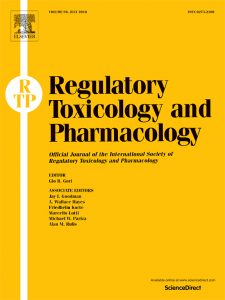Target organ profiles in toxicity studies supporting human dosing: Does severity progress with longer duration of exposure?

Abstract:
We have previously reported the profile of target organs (defined as organs showing histopathological changes) in rodent and non-rodent toxicity studies conducted prior to first-time-in-man (FTiM) for 77 AstraZeneca candidate drugs (CDs). Here, we test the assumption that toxicity is exacerbated by dosing duration by comparing the incidence and severity of target organ toxicities in these ≤6 week FTiM studies with those observed in subsequent subchronic/chronic (≥3 month) studies. Looking at the effect of dosing duration on severity (pathological score) and incidence (percentage of animals within the group) for the 39 CDs that met the criteria for inclusion (comparable doses between FTiM and subchronic/chronic studies), new toxicities appeared for 31 target organs but existing ones resolved for 29 target organs. Increased severity was more frequent for rodent (16 target organs) than for non-rodent (4 target organs). Most notable changes were a large increase in severity/incidence in liver and in non-rodent lung in contrast to a large decrease in severity and incidence for kidneys/ureter and for the non-rodent thymus. Overall this analysis shows that, even with continued exposure, target organ toxicities of CDs are as likely to show partial or complete recovery as they are to progress in severity.





